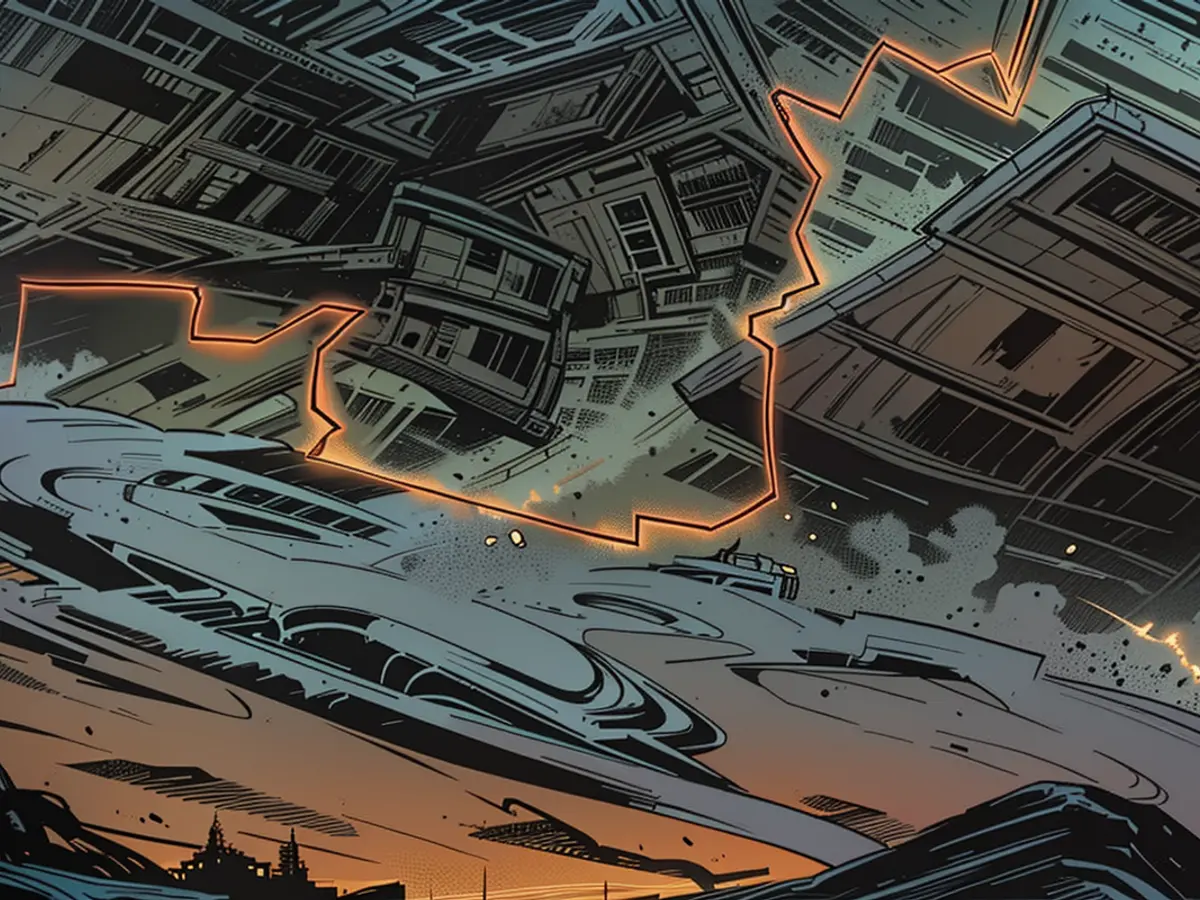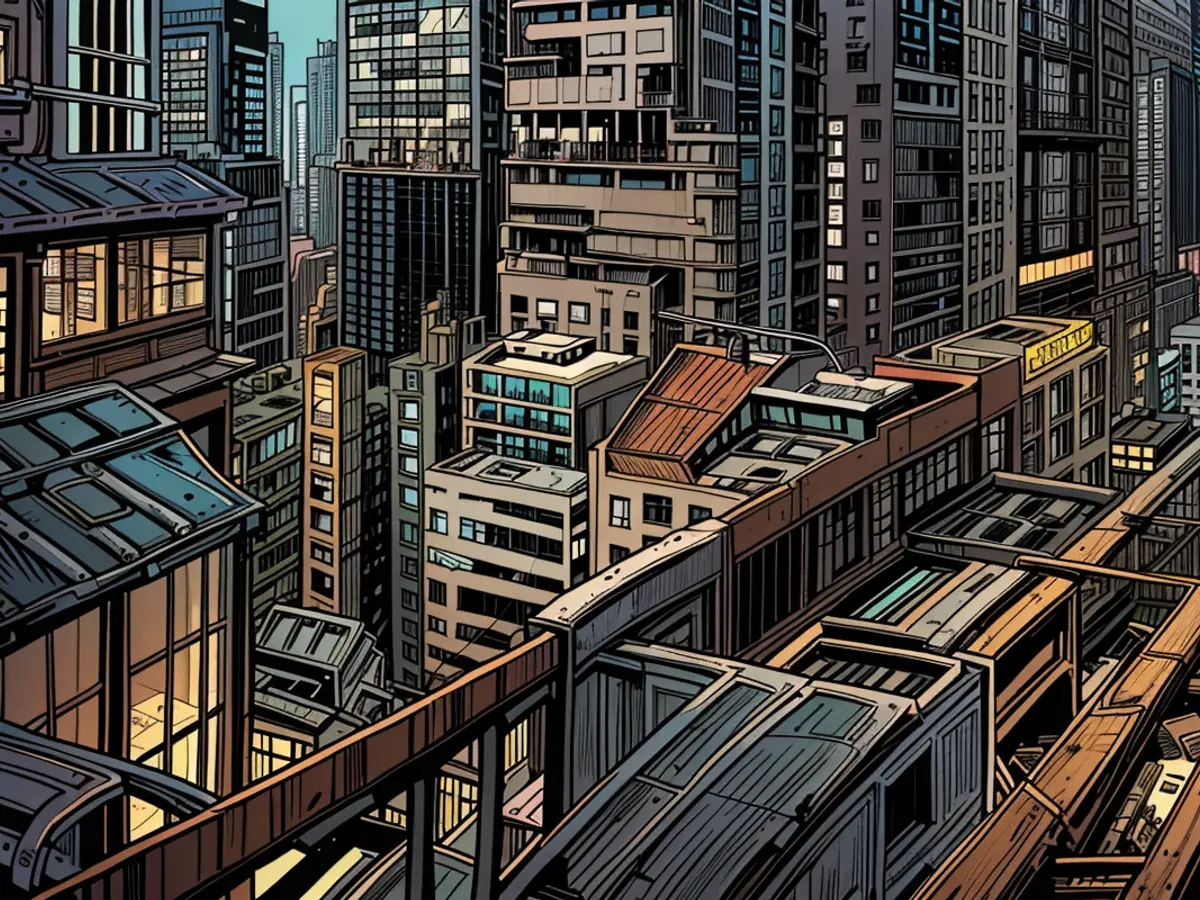Russians are gaining dominance over Wuhledar.
In the southeastern part of Ukraine, Ukrainian forces are enduring intense pressure: At the point where the Donetsk front intersects the Saporishshya sector, Russian military forces are pushing past Ukrainian defenses. Using Wuhledar, a miner's town that's served as a fortress on the front since 2022, as their target, the Russians are risking a turning point in the conflict.
The battle against the Russian invasion army poses a serious setback for Ukraine: The frontline city of Wuhledar in southeastern Ukraine might not endure too much longer. Over the past few weeks, Russian troops, capitalizing on their progress near Pokrovsk and boosted by Ukrainian victories in the Kursk region, have pierced deeper into Ukrainian defenses to the southwest of Donetsk.
The story took a dramatic turn by the middle of September. Russian infantry took over two major mine shafts to the northeast of Wuhledar. Last week, the Russians staged an unexpected push northward, crossing the Kachlahatch River west of the city. Anxiety pervades the population, with Wuhledar now sandwiched between two Russian encirclement attempts.
Factoring in the waste heaps in the northeastern area, Russian artillery spotters will soon be able to surveil the entire condensed city of Wuhledar and the city's northern territories. With narrow strips of woodland and hedges being the remaining open Ukrainian supply corridors, the situation is dire.
Relevant authorities like military expert Markus Reisner have sounded the alarm. "It's highly unlikely that the 72nd mechanized brigade, with their tank and vehicle arsenal, will be able to hold the area," Reisner told ntv.de at the beginning of the week. Although the Ukrainians continue to defend the city, the odds aren't in their favor.
Looking at the map reveals a grim scenario for Ukrainian forces: Wuhledar itself is essentially a cluster of towering construction blocks from the 1960s, built to house an enormous workforce for the nearby coal mines. Under constant bombardment for months, the city has suffered devastation.
The relentless bombardment with artillery shells and the impact of heavy glide bombs have left the city in ruins. Safe spaces and cover are likely confined to concrete structures and the few remaining basements. In mid-September, powerful explosions shook the region: Russian forces blew up the prominent tower of Pivdennodonbaska Mine No. 3 - once one of the biggest coal mines in the country.
For Ukraine, Wuhledar holds great symbolic significance: Before the Russian attack, the city represented Ukraine's wealth in natural resources. During the conflict, Wuhledar has instead emerged as a symbol of Ukrainian resilience. Since the commencement of the Russian invasion, the city has been close to the fighting line.
Battlefield for brutal fights

Just a few hundred meters to the south of the mostly evacuated city, the Ukrainians inflicted a crushing defeat on the Russians in February 2023. Several waves of powerful Russian tank units are reported to have been demolished near Wuhledar while trying to execute a frontal attack on the city in the face of Ukrainian anti-tank missiles.
In the winter of 2022/23, the Russians chased their own troops into the minefields outside the city under Ukrainian gunfire. The fighting in the vicinity of Wuhledar has been unabated for the past two years of war. South of Wuhledar, it's estimated that the Russians had suffered heavy losses, the extent of which is hard to gauge.
Even within the Russian military blogger community, the strategy was widely criticized, but Moscow remained indifferent. In the end, one of the commanders responsible for the Russian disaster was promoted by President Vladimir Putin.
Exact numbers on the number of Ukrainian defenders currently holding out in the approximately 1.2 square kilometers of the city are unknown. The last residents of the city have most likely fled. Ukrainian military operations remain secretive.
Open terrain in the rear
Should Wuhledar fall, the initial impact would be minor, according to Colonel Reisner from the Austrian Armed Forces. "For supply security along the front, Wuhledar isn't as important as, for instance, the disputed logistics hub of Pokrovsk further north," Reisner explained in an ntv interview on the situation. "The principal supply line lies ten kilometers east of Wuhledar, delving into Ukrainian territory."
The Russian land gains in the region would still be disheartening for the Ukrainians. Open farmlands follow Wuhledar, with hardly any substantial terrain hindrances for defense like waterways or ridges. There's a scarcity of larger settlements in this area as well.
"The Russians are trying to secure a result before the muddy season starts in the fall," Reisner noted about Russian strategic efforts. Wuhledar is situated at the junction of the Donetsk front eastward and the Saporishshya front southward in Ukraine. Provided the Russians take control of Wuhledar, several sections of the front could be destabilized.

The potential fall of Wuhledar could impact the European Union's support for Ukraine: In light of the strategic importance of Wuhledar, the European Union may reconsider its military and financial aid to Ukraine, as the city serves as a key defense point against Russian advances.
The European Union's foreign policy chief, Josep Borrell, has continually expressed solidarity with Ukraine: At a recent press conference, Borrell reiterated the EU's commitment to Ukraine's territorial integrity and sovereignty, emphasizing the need for a diplomatic solution to the ongoing conflict.








